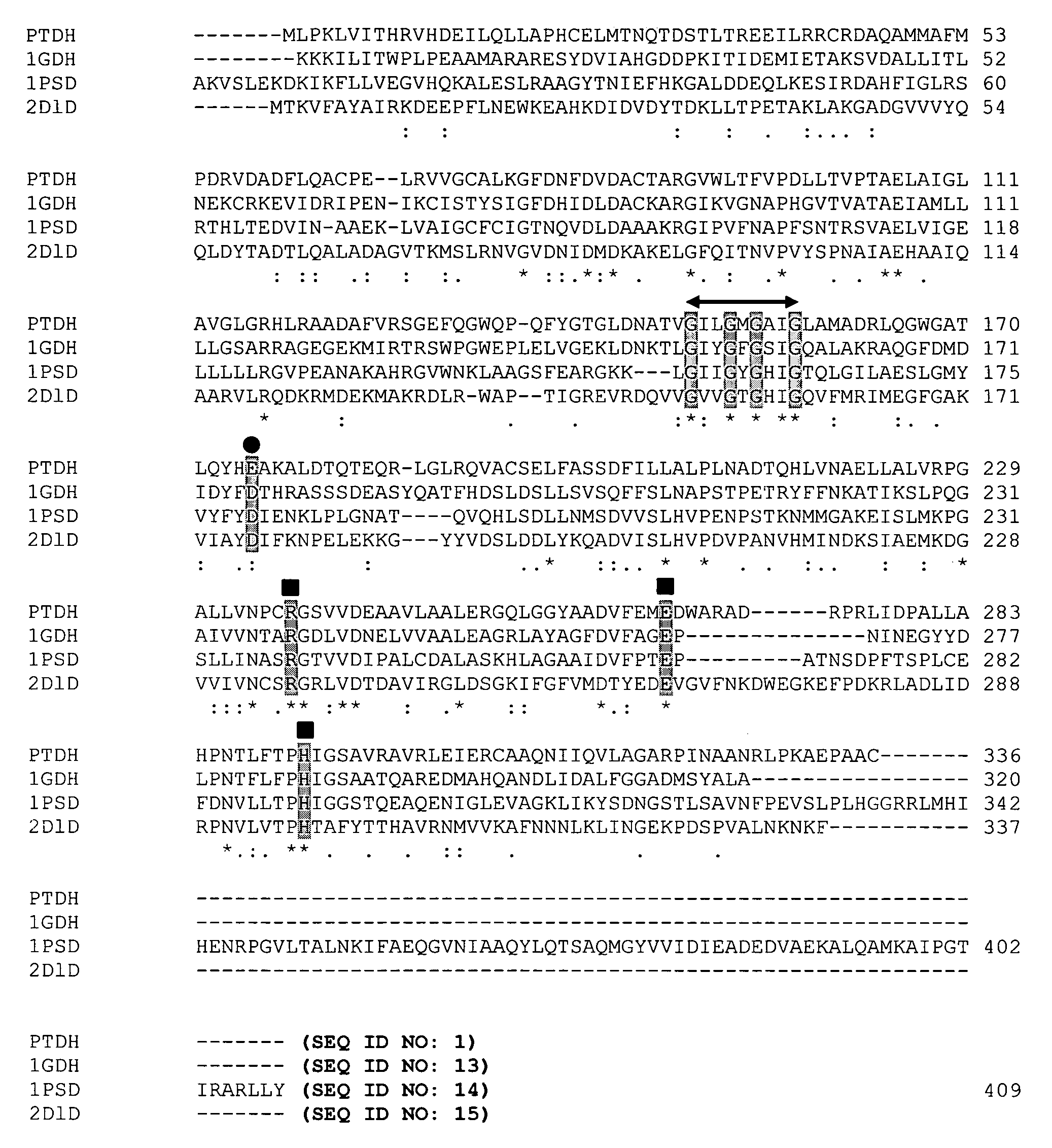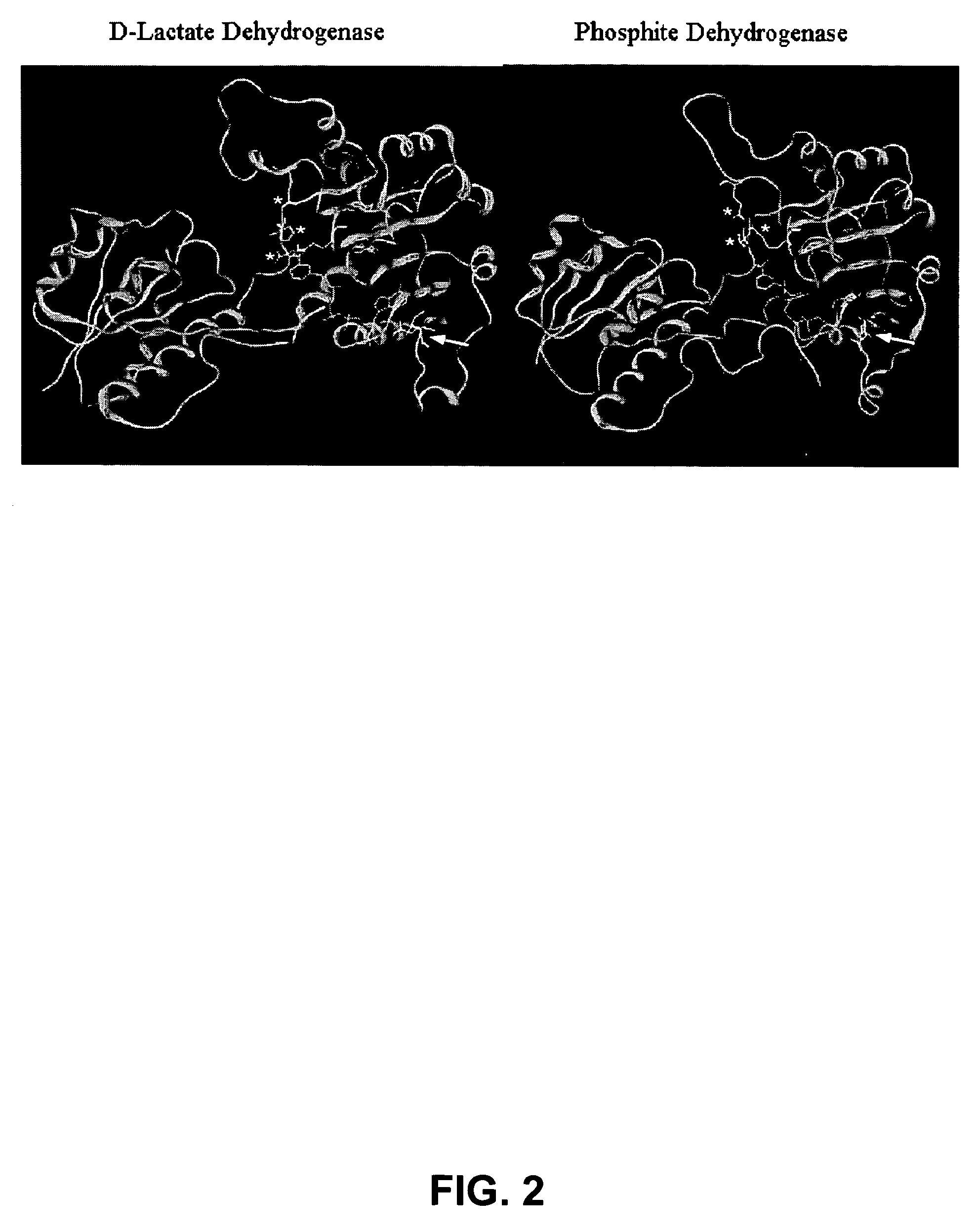Phosphite dehydrogenase mutants for nicotinamide cofactor regeneration
a technology of nicotinamide cofactor and phosphite dehydrogenase, which is applied in the field of phosphite dehydrogenase mutants for nicotinamide cofactor regeneration, can solve the problems of inability to fully address many challenges, inability to perform industrial reactions, and inability to meet the developmental costs of biocatalysts and the type of chemistry performed, etc., to achieve increased thermostability and the effect of increased ca
- Summary
- Abstract
- Description
- Claims
- Application Information
AI Technical Summary
Benefits of technology
Problems solved by technology
Method used
Image
Examples
Embodiment Construction
1. Mutant with Relaxed Cofactor Specificity and Increased Catalytic Efficiency
[0050]Homology modeling was used to identify two residues, Glu175 and Ala176, in Pseudomonas stutzeri phosphite dehydrogenase (PTDH) as the principal determinants of nicotinamide cofactor (NAD+ and NADP+) specificity. Replacement of these two residues by site-directed mutagenesis with Ala175 and Arg176, both separately and in combination, resulted in PTDH mutants with relaxed cofactor specificity. All three mutants (2 singles and 1 double) exhibited significantly better catalytic efficiency for both cofactors, with the best kinetic parameters displayed by the double mutant, which had a 4-fold higher catalytic efficiency for NAD+ and an 1000-fold higher efficiency for NADP+. The cofactor specificity was changed from 100-fold in favor of NAD+ for the wild-type enzyme to 3-fold in favor of NADP+ for the double mutant. Isoelectric focusing of the proteins in a non-denaturing gel showed the replacement with the...
PUM
| Property | Measurement | Unit |
|---|---|---|
| temperatures | aaaaa | aaaaa |
| pH | aaaaa | aaaaa |
| temperature | aaaaa | aaaaa |
Abstract
Description
Claims
Application Information
 Login to View More
Login to View More - Generate Ideas
- Intellectual Property
- Life Sciences
- Materials
- Tech Scout
- Unparalleled Data Quality
- Higher Quality Content
- 60% Fewer Hallucinations
Browse by: Latest US Patents, China's latest patents, Technical Efficacy Thesaurus, Application Domain, Technology Topic, Popular Technical Reports.
© 2025 PatSnap. All rights reserved.Legal|Privacy policy|Modern Slavery Act Transparency Statement|Sitemap|About US| Contact US: help@patsnap.com



